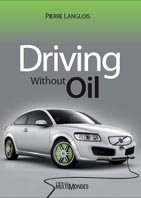
Illustration – Salt « mining » in the Salar of Uyuni in Bolivia, the largest lithium reserves in the world (source: Wikimedia Commons)
The introduction of Li-ion high-performance batteries was, without doubt, the trigger for the imminent revolution in road transport. But is there enough lithium to power a billion cars on the planet, ultimately?
To respond, we must know first that according to the U.S. Geological Survey (USGS), the reserve base for lithium on the planet is estimated at 11 million metric tons. But these estimates do not include reserves of Argentina reported recently by the company Orocobre (3 million tons). A very informative report on the global lithium reserves and markets is available from this company. This report by Martin Place Securities can be downloaded by clicking on the news dated March 31, 2008 about Project Olaroz. In United States, the company Western Lithium is currently conducting geological expertise of a large clay deposit of lithium in Nevada, at King Valley. The estimated reserves are 2.08 million tonnes of lithium (11 million tons of lithium carbonate, Li2CO3) and they are not included neither in the USGS evaluation. Updating the USGS assessment, there is therefore a global reserve base of 16 million metric tons of lithium.
In addition, the USGS reports a global annual production of 25,000 metric tons of lithium in 2007. At this rate of exploitation, there would be enough lithium for several hundred years. This abundance and the low price of lithium (8$/kg) obviously did not stimulate the exploration of new deposits. We can therefore expect that global reserves are more than 16 million tons.
Now, in the Martin Place Securities report mentioned above, we learn that the percentage of lithium recovery from the reserves is about 50% on average. Thus, counting 16 million tons of reserve base it means that 8 million metric tons of lithium are available for the industry.
75% of the Lithium reserves are in the form of salt, mainly lithium carbonate from the deserts of salt. The key deserts are found in South America (top of photo) and also in Tibet. Lithium carbonate is the raw material used by the battery industry (5.3 kg carbonate give 1 kg of lithium).
Now, for a midsize plug-in hybrid car a battery giving it a range of 100 km in electric mode currently requires storing 20 kWh of electric energy. In addition, the company LG Chem, which provides the Li-ion batteries for the GM Chevy Volt, through its subsidiary Compact Power, says on its website (in the Technology section at the FAQ page http://www.compactpower.com/faq.shtml) that they need 140 g of lithium per kWh of battery, giving 2.8 kg of lithium for 20 kWh, which we round up to 3 kg (6.6 lbs). Let us recall that with this 3 kg (6.6 lbs) of lithium, a midsize car can run 100 km (60 miles) in electric mode with today commercial technologies.
Now, hybrid cars of the 2020s will be lighter, more aerodynamic and will be equipped with wheel motor powertrains that consume considerably less energy. These midsize cars of tomorrow will consume about 12 kWh/100 km instead of 20 kWh/100 km as mentioned above (see my book Driving without oil). So one will need only 2 kg (4,4 lbs) of lithium per car [for 100 km (60 miles) all electric range] in 2025. Thus, for a billion vehicles (there are currently 800 million on the planet), we would need about 2 million tonnes of lithium, a quarter of global reserves base available after extraction.
There is therefore enough lithium on the planet for plug-in hybrid cars. But if we wanted to use all electric cars with batteries providing a 400 km range (240 miles), then we would have problems. It is always preferable to use the smallest battery possible to travel 80% of our mileage.
Now, we must realize that the Li-ion batteries can be recycled at 95%. Finite lithium reserves can not therefore be compared with finite oil reserves, since oil is totally lost in an internal combustion engine.
Some critics of electric mobility also point out that about 60% of lithium world reserves are located in South America and that it is a similar situation than the Middle East for oil. But, as lithium price goes up steadily, more and more companies will search for new deposits. Only in the King Valley deposit in Nevada, there is sufficient lithium for 500 million advanced midsize cars with an all electric range of 100 km (60 miles).

Illustration - A mining project of the company Lithium Canada Corporation, near Val d'Or in Quebec, could produce enough lithium to equip all Canadian vehicles with a battery giving a range of 100km (60 miles) in electric mode. (source: Lithium Canada Corporation)
The company Lithium Canada Corp. also uses an old mine near Val d'Or Quebec. It expects to produce the equivalent of 55 million kg (120 million lbs) of lithium, enough for 25 million advanced midsize cars with a range of 100 km (60 miles) in electric mode, which would fulfill the needs of all Canadians.





Lithium exists everywhere, not in concentration form, like the salt you mentioned.
ReplyDeleteFor example, certain plants absorb lithium, such as banana.
While the amount of Lithium in the banana may not be significant enough to do anything, it does illustrate the possibility of using bio-filter way to absorb the lithium already exist everywhere.